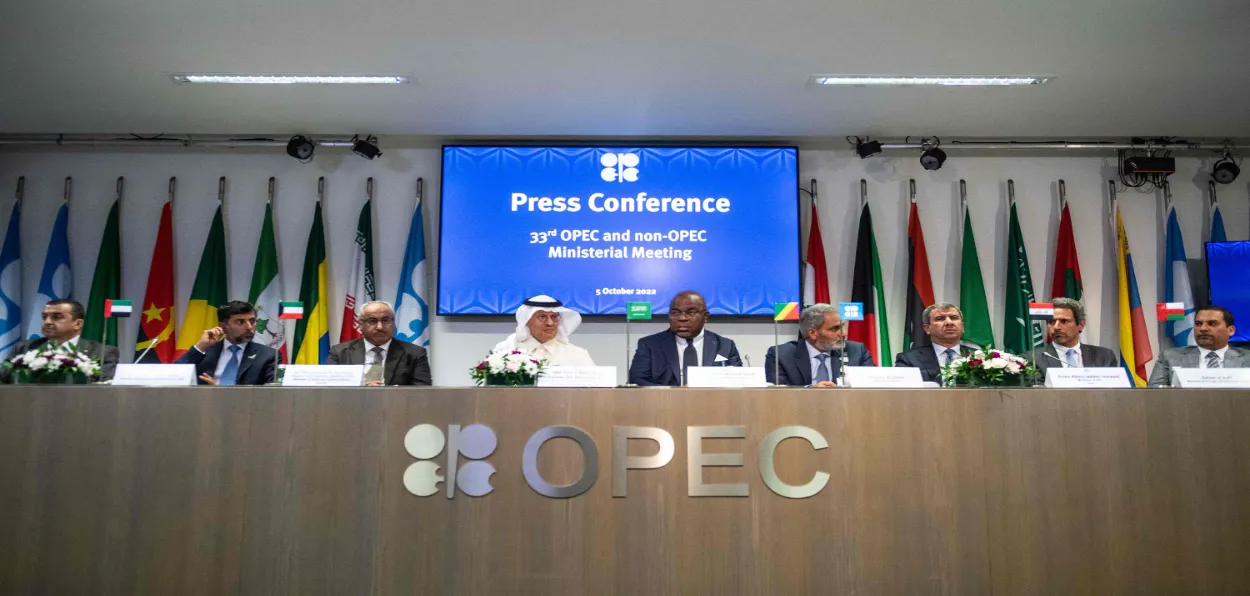
 Sushma Ramachandran
Sushma Ramachandran
Global oil markets are firming up rapidly and it looks as if the gloomy forecasts of a high price scenario for next year may come true. Both Goldman Sachs and Citibank have predicted that crude oil will touch 100 dollars per barrel by the end of 2024. The hardening trend has arisen after Saudi Arabia and Russia decided earlier this month to extend voluntary production cuts for another three months. The announcement has caused prices to spike to their highest level since November last year.
The rise in world oil prices does not portend well for India as it relies on over 85 percent of its crude oil needs from imports. Currently, the benchmark Brent crude is nearing 95 dollars per barrel while the West Texas Intermediate crude from the U.S is around 91 dollars per barrel. This is in sharp contrast to three months ago when prices were hovering in the range of 75 to 80 dollars.
It was then that Saudi Arabia, leader of the Organisation of Petroleum Exporting Countries (OPEC) Plus cartel announced this production cut which came into effect in July. It had come on the back of an earlier output cut of 1.15 million barrels per day for the entire cartel in April. Russia as a member of OPEC + has also extended its reduction of 300,000 barrels per day for the next three months right up to December.
The contraction in supply combined with other developments like improved demand from China, have created the current price spiral. Though the economic outlook for the world’s largest oil importer is not yet robust, demand has picked up, reports say, due to a rise in industrial output and higher consumer spending.
The spike in oil prices is not just a problem of emerging economies like India which will be forced to shell out more foreign exchange resources to meet their energy needs. The issue also looms large before the global North. The crisis will only worsen for the developed countries of Europe and the U.S. which had been struggling with soaring energy prices due to the Ukraine conflict. The unprecedented inflation caused by high energy costs over the past year and a half threatens to recur in case crude oil prices fail to cool down soon. These pressures had been the driver for aggressive rate hikes by the central bank but the softening of oil prices since last December had brought some relief.
The U.S. Federal Reserve has indicated its intent to pause the current rate hike cycle recently. This followed moderation in U.S. inflation to three percent in June. It has since accelerated to 3.2 percent in July and 3.7 percent in August. The rising trend is being pushed by higher energy costs. If oil prices continue to surge, the U.S. Fed may have to call off its plans to halt rate hikes. In addition, the Biden administration is worried about rising gasoline prices as a big chunk of its Strategic Petroleum Reserve (SPR) was released last year to stabilise prices. This gives it little leeway to act in the current scenario.
European countries will also be hard hit by the continuing firming up of oil prices. Inflation had tamed to some extent in recent months with the Eurozone recording a 5.3 percent rise in August. But the hardening of oil markets will recreate last year’s scenario of high energy costs.
As for India, if the present trend continues in world oil markets, it could face an expanding fuel import bill. A special discount for developing economies has been ruled out by OPEC + in the past and there is no indication of it doing so now as well. Though Saudi Arabia has declared its intent to make sizable investments in India during the recent visit of the Crown Prince, there has been no change in its stance on the price front. The leader of OPEC + is adamant about ensuring that prices remain above 85 dollars per barrel.
In the case of discounted oil purchases from Russia, these are no longer much different from market rates. India will therefore find it difficult to keep its oil import bill at manageable levels in 2023-24. This was estimated at 158 billion dollars in 2022-23 compared to 121 billion dollars in the previous year.
In this backdrop, it is clear that India will have to keep the focus on new and renewable energy sources to reduce its reliance on hydrocarbons from abroad. The country has been moving ahead rapidly in this direction with renewables now accounting for as much as 40 percent of the total power supply, according to Power Minister R.K. Singh. The launch of the Global Biofuels Alliance is also expected to give an impetus to the bio-ethanol and biogas sector. The formation of this platform is significant as it will allow interacting with countries like the U.S. and Brazil which are leaders in the production of these biofuels. It will enable member countries to exchange best practices, accelerate technology development, and bolster policy frameworks.
In addition, the automobile industry is gradually moving towards an expansion in the production of electric vehicles. Though the numbers are not large right now, the demand for EVs is reported to be high and the growth rate in terms of sales is encouraging.
ALSO READ: Trudeau pushes Canada to the brink by making it nursery for terrorists
At the same time, the drive towards new and renewable energy sources is likely to fructify only in the long run. In the short and medium term, the country will have to buy hydrocarbons from the international market to meet its strategic needs. Though the prices are high right now, market trends have been volatile lately and it would be difficult to make firm predictions about future trends. One can only hope that the current hardening trend subsides and makes life easier for emerging economies like India.
Sushma Ramachandran is a senior financial journalist and was formerly associated with the Hindu.
